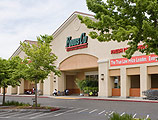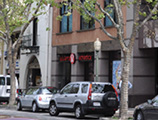To everything turn, turn, turn
There is a season turn, turn, turn
And a time to every purpose under heaven
A time to borrow, a time to lend*
Some pundit proclaimed that commercial real estate skipped the recession and went straight to the depression. Like most blanket statements, that one is full of holes, but it does cover office buildings nicely, especially in beleaguered cities such as ours. While San Francisco will surely recover, you’ll need to find a greater fool to say when.
One gaping sinkhole on the city’s long road to recovery is the lending market. Or rather, lack thereof. While the obscenely rich can still borrow from the major banks (Citi, Wells, JP Morgan and BofA), an ordinary investor wishing to renovate a building cannot, even if they can buy it for 20 percent of its former value. In short, the Bigs, along with their shirttail cousins—the regional and community banks—have stepped away from commercial RE lending.
But, like nature, business abhors a vacuum. If banks won’t lend, someone else will. And that brings us to what the RE industry calls hard money. For some odd reason, hard money guys are not enthralled with the term, preferring to call themselves private money lenders. In fact, they—like everyone else—have their own industry group: the American Association of Private Money Lenders. Hard money is seldom, if ever, intended as a replacement for traditional financing; rather, it’s meant to be a bridge—or more accurately, a lifeline—with a duration of a year or two to enable borrowers to get to their project’s other side: its long-term conventional financing or sale.
In good times, even second-tier borrowers are popular, sought after by multiple lenders, while hard money is a fringe player with a limited clientele: borrowers willing to overpay in exchange for speedy funding (the hards can and do make commitments virtually overnight) and borrowers with mixed track records. Good times are often unkind to hard money; desperate for business, private lenders can find themselves wooing borrowers no one else will touch, sometimes to their lasting regret.
But Ecclesiastics and the Byrds were right, there’s a time for everything. Today it’s hard money’s turn, its best time in 40 years. Private lenders in all sizes—from pawnbrokers to billion-dollar debt funds—are thriving. (Except those that were borrowing heavily themselves to fund their loans). Debt funds, by the way, are yet another Wall Street creature. To create one, the Street’s private equity jockeys raise, say, 250 million from among their investors—usually, pension funds—and borrow another 750 million to capitalize their fund.
Here’s an example of a hard money deal today. A good friend found a rundown 30-unit apartment building in Davis, a well-heeled university town with high barriers to entry, as safe a city as any in which to invest. It’s worth noting that lenders are still willing to lend on apartments, while they have, for all intents and purposes, redlined office buildings. This developer approached 20 debt funds in his search for financing. The best quote he received was a two-year loan with interest and fees totaling 12 percent per annum.
The deal died. Why? Because had he purchased the property, renovated and leased it, it would have sold—maybe—for a 5 percent return. There are only two ways for such a deal to ever pencil out: either the purchase price is such a steal the buyer should be arrested for grand theft or, upon redevelopment, they can jack the rents high enough to offset the chasm between interest rates and the property’s selling yield. The 12 percent cost is reality; the eventual sales price—and developer profit—is at least in part wishful thinking. That downstream sales price will be largely dependent on interest rates a couple years out, a rate which no one this side of heaven can foretell.
Writ large, this broken deal is happening across the country. Commercial transactions are off roughly 75 percent because so few deals are penciling. Blaming hard money, however, for the industry’s woes would be like blaming masks for Covid. Hard money is a by-product of the Fed’s war on inflation, not the cause of economic woe. That said, commercial RE will flounder until either interest rates return to their recent lows or sellers drop their prices to reflect a 12 percent world (about as likely as Congress adopting age limits).
The upshot? Sadly, properties badly in need of reinvestment—e.g., San Francisco’s ghost towers—will languish for some time to come.
*OK, OK, so I added the last verse.






















